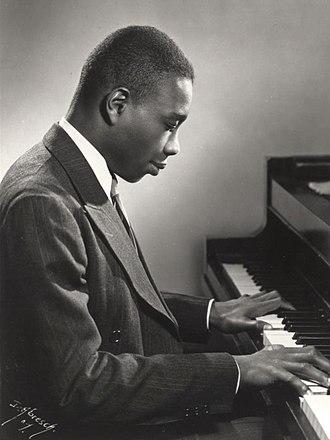On May 12 and 13, the next installment in the Beethoven and American Masters Festival will be live at the Kennedy Center. Be sure and read Nicole Lacroix’s articles about the series in our blog and in the May issue of WETA Magazine.
This concert will feature Ludwig van Beethoven’s Eighth and Seventh Symphonies and George Walker’s Sinfonia No. 5, “Visions”.
Beethoven’s Symphony No. 7 in A major, Op. 92 (memorably dubbed “the apotheosis of the dance” by Richard Wagner) and his Symphony No. 8 in F major, Op. 93 were both completed in 1812. Interestingly, neither symphony has a slow movement; even the elegiac second movement of the Seventh Symphony is marked “allegretto” (though a tradition of conductors defying the composer and taking it slowly persisted for generations). They could be said to be the last symphonies of Beethoven’s “middle period”.
American composer George Walker (1922-2018) was the topic of a Classical Breakdown episode last season in conversation with Walker’s longtime friend, Dr. Mickey Terry. Walker composed five single-movement works that he entitled “Sinfonia”; the last of these, the Sinfonia No. 5, is entitled “Visions” and was completed in 2016. It is the composer’s response to the abomination that occurred at “Mother Emanuel” AME Church in Charleston, South Carolina when nine people old and young lost their lives to a gunman who, days before his monstrous crime, had posed on social media waving a Confederate flag. The “Visions” Sinfonia is Walker’s last completed composition. Its first performance was for a recording on the Albany Records label by Sinfonia Varsovia conducted by Ian Hobson.
The score includes rhythmic speaking parts (the composer specified that the work can be performed with or without these) that are a veiled evocation of the port of Charleston and the agonies of enslavement, such as in phrases like
The sun sets deep into the sea
And ships glide stealthily
or this utterance, heard in the Sinfonia’s final minutes:
I see the harbors and the ports where men enslaved
Were beaten, chained, auctioned and bought.
Maestro Noseda’s decision to juxtapose this work with two of Beethoven’s most ebullient orchestral compositions is a fascinating choice. Arguably a thread that runs through them is the struggle for human freedom and dignity in the face of violence and oppression. So much of Beethoven’s music is a response to the Napoleonic wars and the dramatic changes in governance and social structures in European society in his lifetime, with the decay of systems of despotism and a striving — sometimes disastrously, sometimes hopefully — toward something freer and better. Walker’s “Visions” Sinfonia is a remembrance of the enormities of history, laced with an insistence not only on not forgetting those horrors, but on dauntlessly persevering in a demand for liberation in every sense.
PBS PASSPORT
Stream tens of thousands of hours of your PBS and local favorites with WETA+ and PBS Passport whenever and wherever you want. Catch up on a single episode or binge-watch full seasons before they air on TV.
